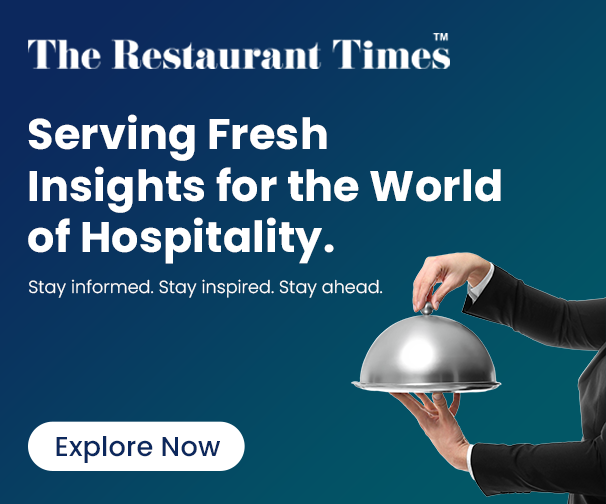In today’s dynamic and evolving landscape, fine casual dining is becoming increasingly popular, emerging as a powerful and influential trend, reshaping the way modern customers experience food and hospitality. Positioned strategically between traditional dining and upscale fine dining, this innovative modern dining restaurant concept offers the best of both worlds—elevated cuisine, stylish ambiance, and attentive service, all delivered in a more relaxed setting and accessible format. The rise of premium casual restaurants reflects a shift in consumer expectations, where diners seek memorable experiences and quality ingredients with a touch of luxury without the formality or higher price points of traditional fine dining. These establishments are leading the charge in offering sophisticated menus, a not-so-formal setting, craft beverages, and design-forward interiors that resonate with today’s audience. As trends in upscale casual dining continue to gain momentum, premium casual dining is becoming a defining feature of the restaurant industry, attracting a broad demographic that values both indulgence and approachability.
What Defines Premium Casual Dining?
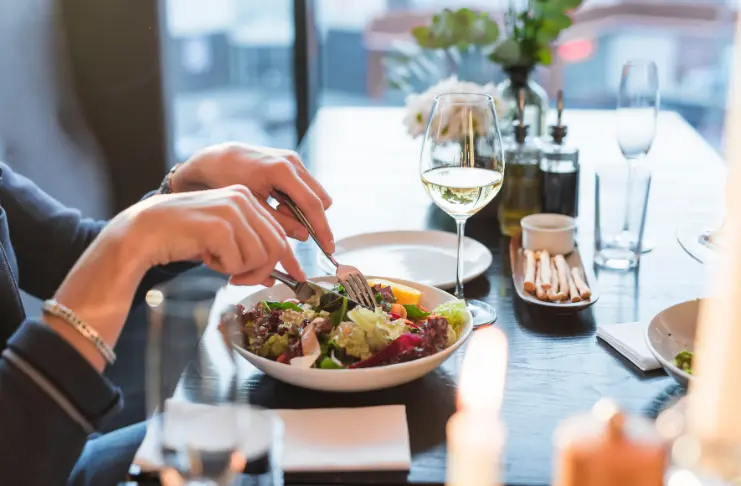
Premium casual dining blends upscale food items, stylish ambiance, and refined service at accessible prices. This modern casual dining restaurant concept is driving the rise of fine casual restaurants, catering to guests who want quality without the formality. It’s a key player in today’s trends in upscale casual dining. Establishments in this segment typically feature:
- Chef-driven, locally-sourced menus
- Upscale, thoughtfully designed interiors
- Attentive, knowledgeable yet relaxed service
- Craft cocktails and signature drinks to keep a full bar
- Mid-range pricing between casual and fine dining restaurants
The Evolution of Casual Dining to Premium Casual
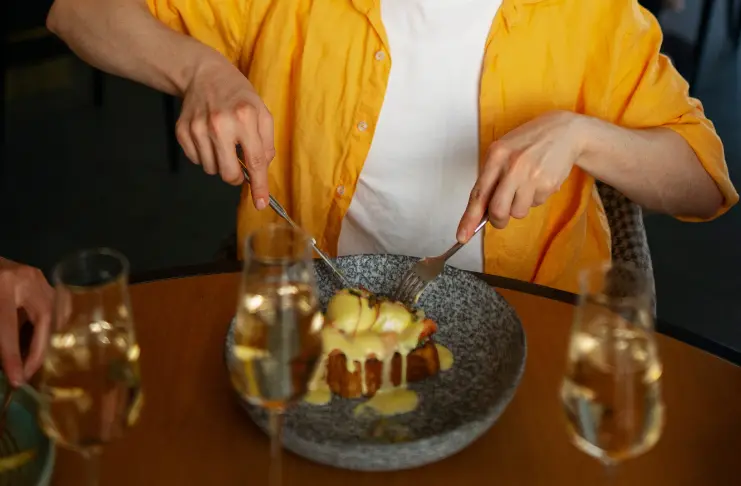
The rise of premium casual restaurants stems from shifting consumer values and evolving dining habits, marking a pivotal moment in the transformation of the modern casual dining restaurant concept.
Historical Context
The restaurant industry has continually adapted to changing tastes. For years, traditional casual dining dominated with familiar menus and family-friendly pricing. But with rising culinary awareness and social media influence, consumer expectations evolved—driving demand for high quality food and more engaging modern casual dining restaurant concepts.
Catalyst for Change
Several factors have fueled the rise of premium casual restaurants in recent years:
- Millennials and Gen Z value experiences over possessions. In the U.S., 62% of Gen Z diners eat out at least once a week
- Increased food knowledge and culinary expectations with a need of innovative food items on the menu
- Demand for authenticity, sustainability, and ethical sourcing
- Social media is driving interest in photo-worthy, unique spaces and dishes
- Post-pandemic shift toward quality dining experiences
This shift in behavior accelerated the growth of premium casual dining restaurants, as innovative restaurant operators embraced the modern casual dining restaurant concept to meet evolving consumer demands.
Key Characteristics of Successful Premium Casual Concepts

Key elements driving the success of premium casual dining include thoughtful menu design, immersive atmospheres, and curated beverage programs—all central to modern casual dining restaurant concepts and current trends in upscale casual dining.
Thoughtful Menu Development
At the core of trends in upscale casual dining is innovative menu design that blends sophistication with approachability. Successful premium casual dining concepts feature menus that:
- Elevate familiar favorites
- Highlight seasonal, local ingredients
- Include shareable, social plates
- Balance indulgent and healthy options
- Introduce bold yet accessible flavors
This approach lets diners enjoy a unique experience while staying within their comfort zone, perfectly capturing the essence of the modern casual dining restaurant concept.
Strategic Atmosphere Creation
The physical environment is key to the premium casual dining experience. These restaurants focus on creating inviting, stylish spaces that feel upscale yet approachable. Common design features include:
- Open kitchens showcasing craft
- Natural materials like wood and stone
- Mood-enhancing, functional lighting
- Balanced acoustics for conversation
- Flexible seating for all group sizes
These elements create premium casual dining spaces that are elevated yet inviting, embodying the modern casual dining restaurant concept.
Beverage Program Integration
Premium casual dining spots view beverages as key revenue drivers and experience enhancers. Typical modern casual dining restaurant concepts offer:
- Craft cocktails with house-made ingredients
- Curated wine lists with great value
- Local craft beers from regional breweries
- Expanded non-alcoholic options
- Specialty coffee and tea programs
These beverage offerings help premium casual restaurants elevate the dining experience and stand out in the trends in upscale casual dining.
The Economics of Premium Casual Dining
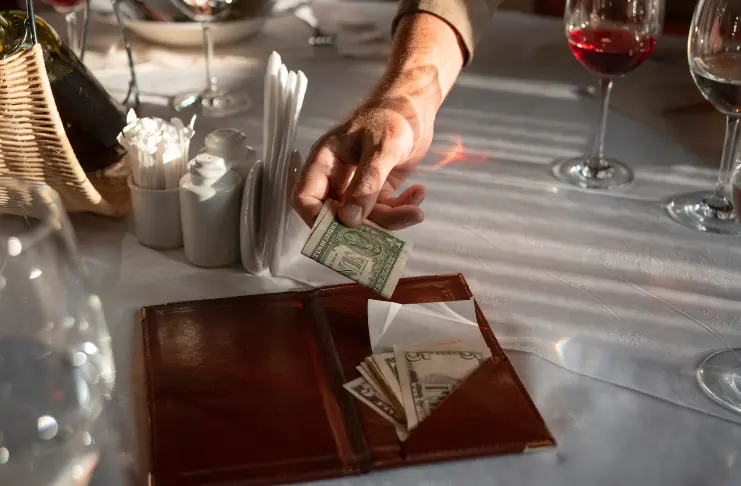
Effective price point positioning and operational strategies are crucial for the success of premium casual dining within the evolving modern casual dining restaurant concept and trends in upscale casual dining.
Price Point Positioning
Premium casual dining occupies a strategic pricing middle ground—higher than traditional casual but below fine dining. This position helps operators:
- Attract experience-focused, value-conscious diners
- Justify premium prices with quality and ambiance
- Encourage frequent visits, not just special occasions
- Maintain strong profit margins despite higher costs
- Diversify revenue across multiple dayparts
This model thrives as consumers prioritize experiences over material goods, fueling the rise of premium casual restaurants and shaping trends in upscale casual dining.
Operational Considerations
Operating a premium casual dining restaurant involves unique challenges distinct from casual and fine dining, including:
- Balancing higher ingredient costs with accessible pricing
- Training staff for knowledgeable, unpretentious service
- Ensuring consistency with complex menus
- Building efficient kitchens for high volume
- Designing flexible spaces for multiple dayparts
Successful operators address these through strategic planning and ongoing training, key to thriving within the modern casual dining restaurant concept and trends in upscale casual dining.
Regional Variations in Premium Casual Dining
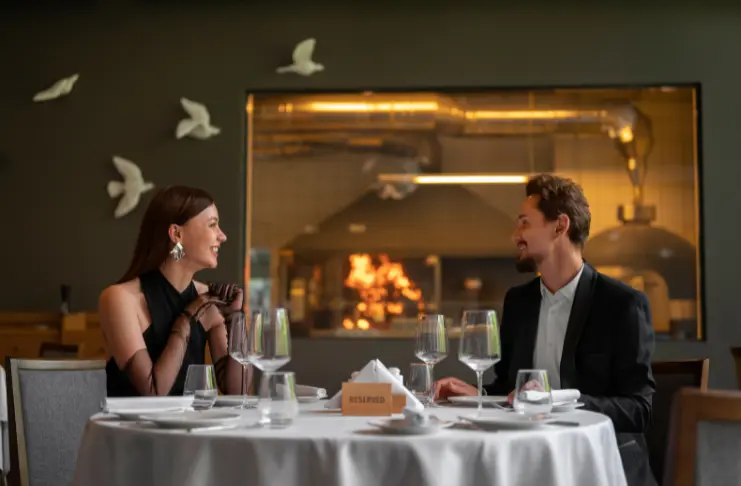
Urban centers drive innovation in the rise of premium casual restaurants, while expansion into suburbs grows the fine casual dining establishments concept and trends in upscale casual dining.
Urban Centers as Innovation Hubs
Major metropolitan areas have become hubs for premium casual restaurants, each region showcasing unique styles within the modern casual dining restaurant concept:
- East Coast: Focus on heritage ingredients and classic techniques with modern twists
- West Coast: Emphasis on produce-driven, health-conscious menus
- South: Elevated regional classics with refined preparation
- Midwest: Heartland ingredients blended with global flavors
These regional variations highlight local culture and ingredients while staying true to the premium casual dining experience.
Suburban and Secondary Market Expansion
While the rise of premium casual restaurants began in major urban centers, the fine and casual dining restaurant concept has expanded successfully into suburban and secondary markets:
- Concepts adapted to local tastes and price points
- Locations near upscale neighborhoods and shopping areas
- Design tailored to suburban spaces
- Menus reflecting regional ingredients and preferences
- Marketing focused on accessible, memorable experiences
This growth broadens the reach of premium casual dining, making upscale casual dining trends accessible beyond city centers.
Technology Integration in Premium Casual Dining
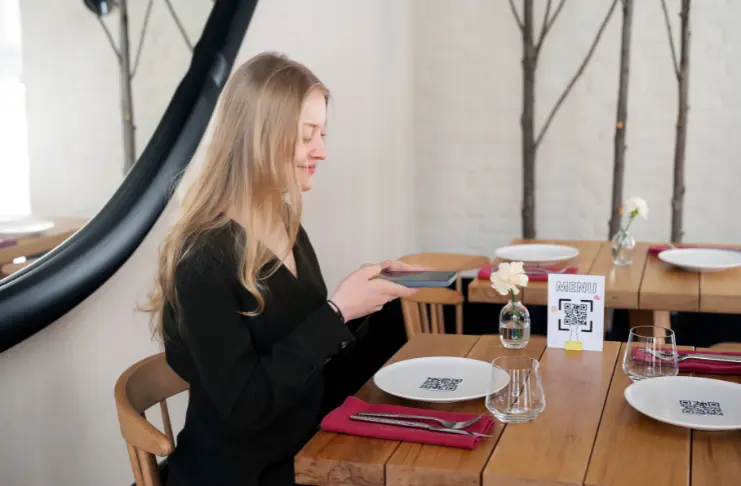
In the rise of premium casual restaurants, integrating customer-facing and operational technology has become essential to enhancing the modern casual dining restaurant concept while supporting the evolving trends in upscale casual dining.
EXPERT INSIGHT
| Jeff Bezos told Forbes, “We see our customers as invited guests to a party, and we are the hosts. It’s our job every day to make every important aspect of the customer experience a little bit better.” This mindset underscores why customer-focused technology in restaurants is vital—it elevates service, builds loyalty, and keeps guests coming back. |
Customer-Facing Technology
Modern casual dining restaurant concepts driving the rise of premium casual restaurants are leveraging technology to enhance guest experiences and draw customers without losing the personal touch central to premium casual dining. Key tools include:
- Reservation systems for convenient booking and flow management
- Digital wine lists providing detailed info without burdening staff
- Online mobile ordering platforms enabling easy takeout during off-peak times. A study suggests that 90% of CMOs are expanding investments in digital commerce.
- Instagram-worthy presentations designed for social sharing for increased customer engagement
- QR code menus offering flexible, multimedia dining options
- Special offers and customer loyalty programs for regulars and to attract customers
By using technology as a complement to service, these trends in upscale casual dining create seamless, memorable experiences for today’s diners.
Technology to Streamline Operations
Behind the scenes, premium casual restaurants use technology to boost consistency and efficiency:
- Kitchen display systems managing ticket flow
- Inventory platforms reducing ingredient waste
- Staffing software optimizing labor costs
- CRM tools enabling personalized service
- Analytics tracking menu performance and innovation
These tools help operators balance quality food experiences with operational sustainability.
The Future of Premium Casual Dining
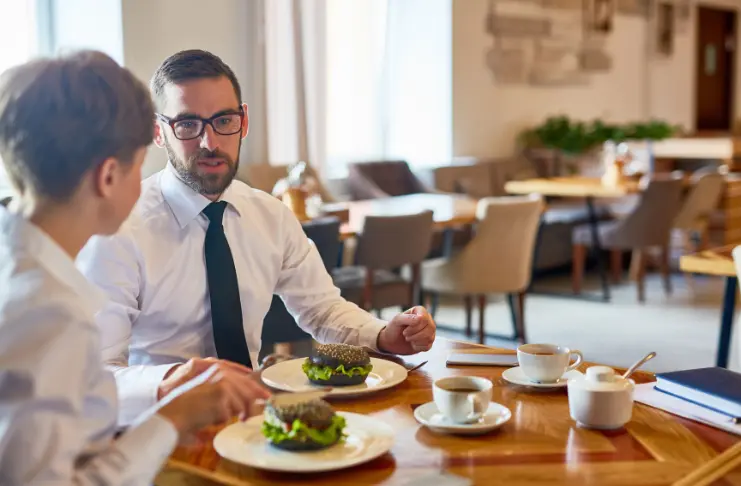
The rise of premium casual restaurants is driven by emerging trends like health-focused menus and sustainability, alongside challenges and opportunities shaping the future of the modern casual dining restaurant concept and trends in upscale casual dining.
Emerging Trends
The premium casual dining segment continues to evolve, driven by emerging trends in upscale casual dining such as:
- More health-conscious and plant-based menu options
- Greater focus on transparent sourcing and sustainability
- Flexible concepts adapting to changing consumer habits
- Growth of premium casual “grocerants” blending retail and dining
- Expansion of delivery and take-home experiences
These trends highlight the ongoing rise of premium casual restaurants while preserving the core modern casual dining restaurant concept.
Challenges and Opportunities
As the rise of premium casual restaurants continues, key challenges and opportunities shape the modern casual dining restaurant concept:
- Labor market tensions demand creative staffing and pay
- Supply chain issues require flexible menus and sourcing
- Real estate hurdles drive innovative design solutions
- Consumer price sensitivity impacts spending during uncertainty
- Growing competition as trends in upscale casual dining attract investment
Operators who navigate these challenges while seizing opportunities will thrive in the evolving premium casual dining market.
Conclusion
The rise of premium casual restaurants signals a fundamental transformation in how consumers engage with dining, reflecting deeper trends in upscale casual dining that prioritize a balance of quality, comfort, and style. This modern casual dining restaurant concept bridges the gap between traditional casual and fine dining by delivering elevated culinary experiences in relaxed, approachable settings. As diners increasingly seek memorable moments that combine sophistication with accessibility, premium casual dining stands out as the ideal choice. For operators, this segment offers creative freedom and sustainable profitability by catering to evolving tastes and values. With its flexible, experience-driven approach, premium casual dining is not just a trend but a lasting evolution in the restaurant industry—one that promises to shape how people gather, dine, and connect for years to come.
Frequently Asked Questions
1. What does premium casual mean?
Premium casual refers to dining that offers elevated food and ambiance with relaxed, approachable service at mid-range prices.
2. What is the premium casual dress code?
The premium casual dress code is polished yet comfortable, and it often includes smart-casual attire without formalwear.
3. What is the meaning of premium dining?
Premium dining is a higher-quality restaurant experience that combines superior food, service, and ambiance, usually priced above casual dining.
4. What is considered a casual dining restaurant?
A casual dining restaurant offers moderately priced meals in a relaxed, family-friendly setting with table service.
5. What do you wear to an upscale casual restaurant?
Wear smart-casual attire such as dress pants or skirts paired with stylish tops or blouses, avoiding overly casual clothing.
What are the trends for fast casual restaurants?
The growing trend of fast casual includes healthier menus, digital ordering, sustainability, and locally sourced fresh ingredients.
7. What is the outlook for the casual dining market?
The casual dining market is evolving with a focus on premium experiences, technology integration, and adapting to consumer preferences.
8. What is the difference between upscale and casual dining?
Upscale dining offers formal service, refined menus, and high-margin items and their prices, while casual dining is more relaxed with moderate pricing.
9. What is the concept of a casual dining restaurant?
Casual dining combines table service with affordable menus in an informal atmosphere.
10. What makes a restaurant casual dining?
A restaurant is casual dining if it provides sit-down service, moderate pricing, and a relaxed environment.
11. What is a contemporary casual dining restaurant?
Contemporary casual dining blends modern design, chef-driven menus, and approachable service.
12. What brands are modern restaurant concepts?
Brands like Shake Shack, Sweetgreen, and True Food Kitchen exemplify modern restaurant concepts focusing on quality and experience.




